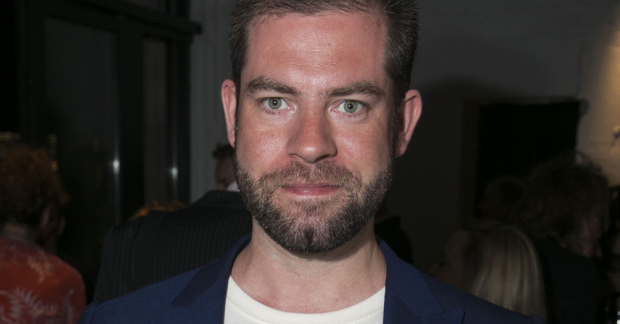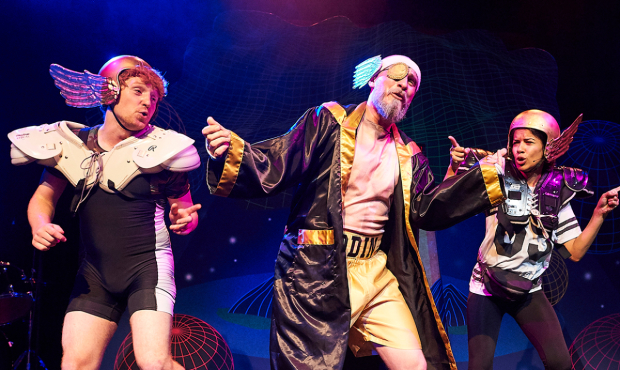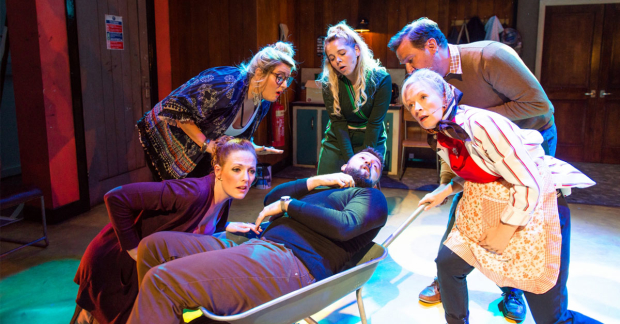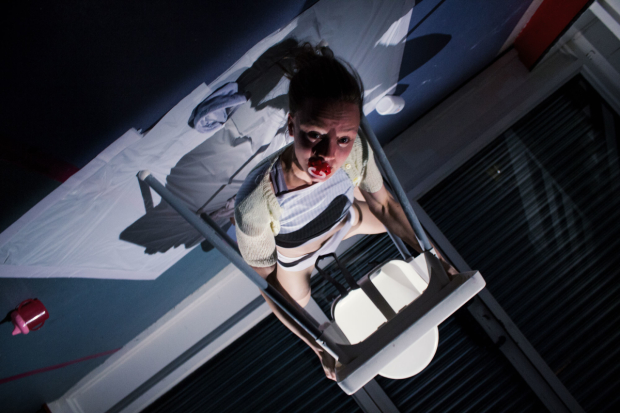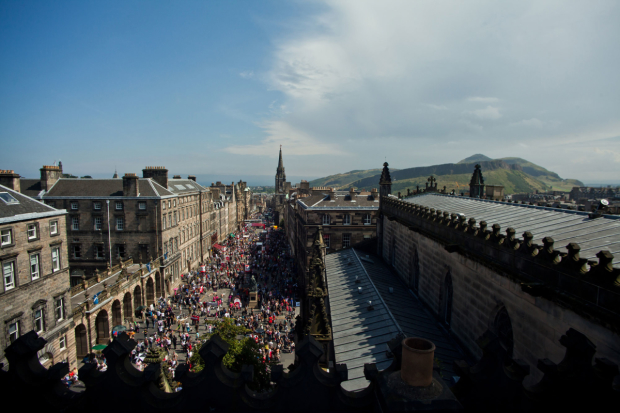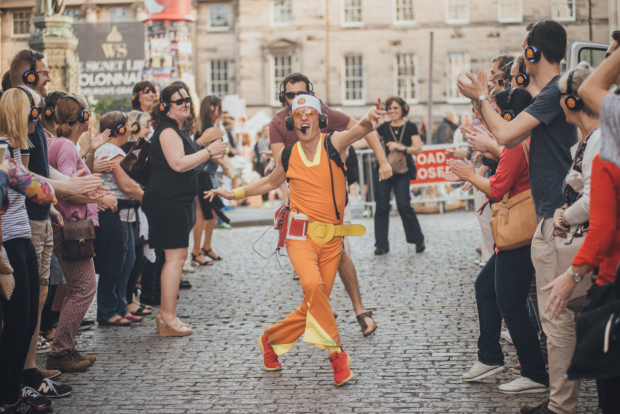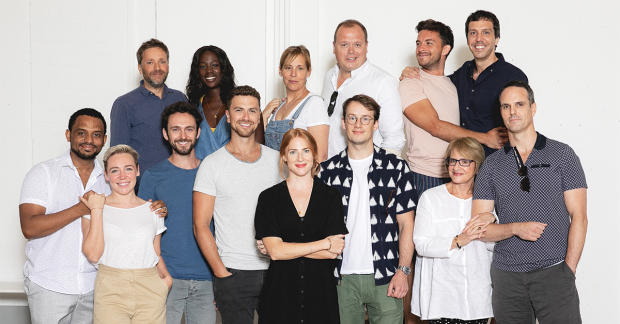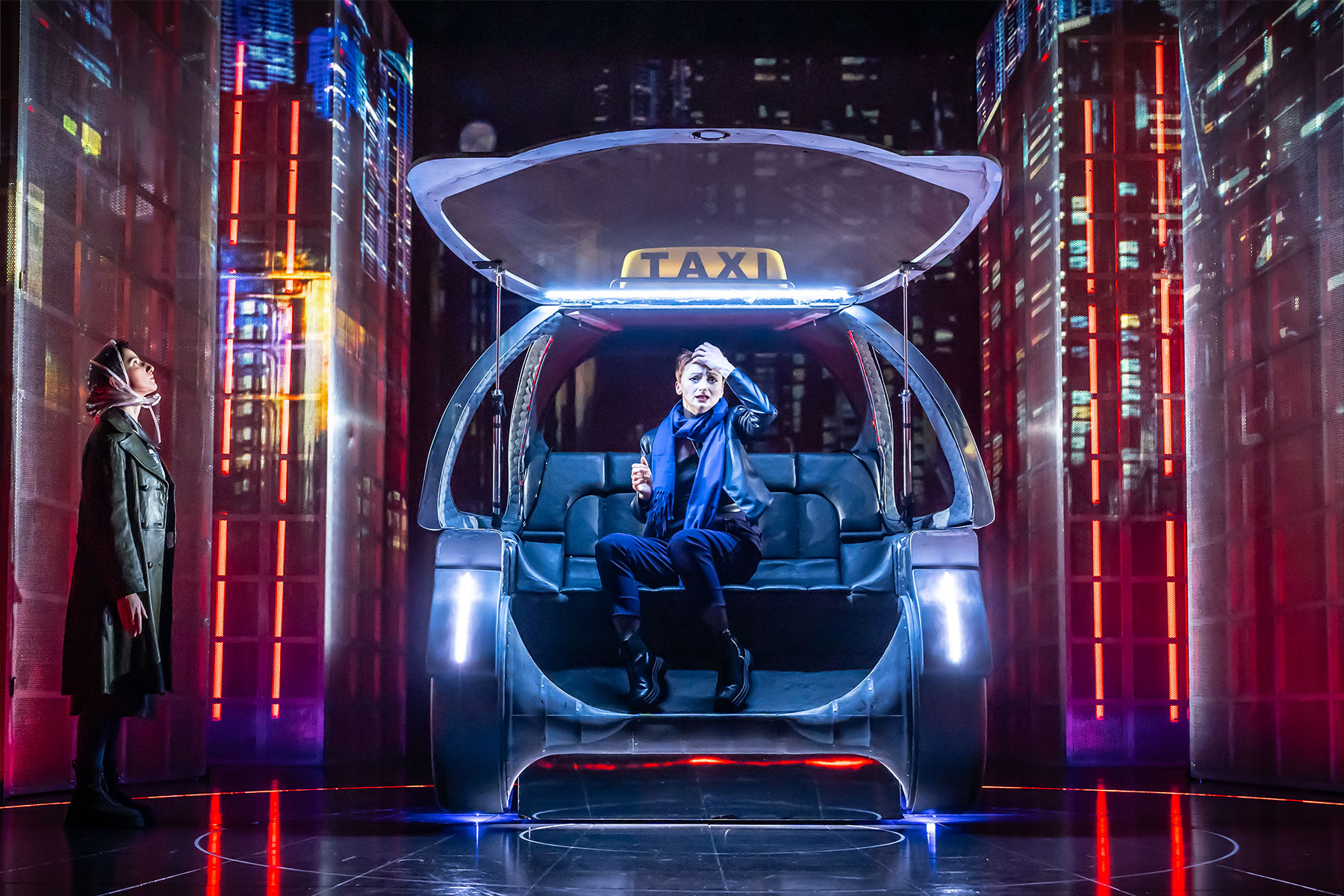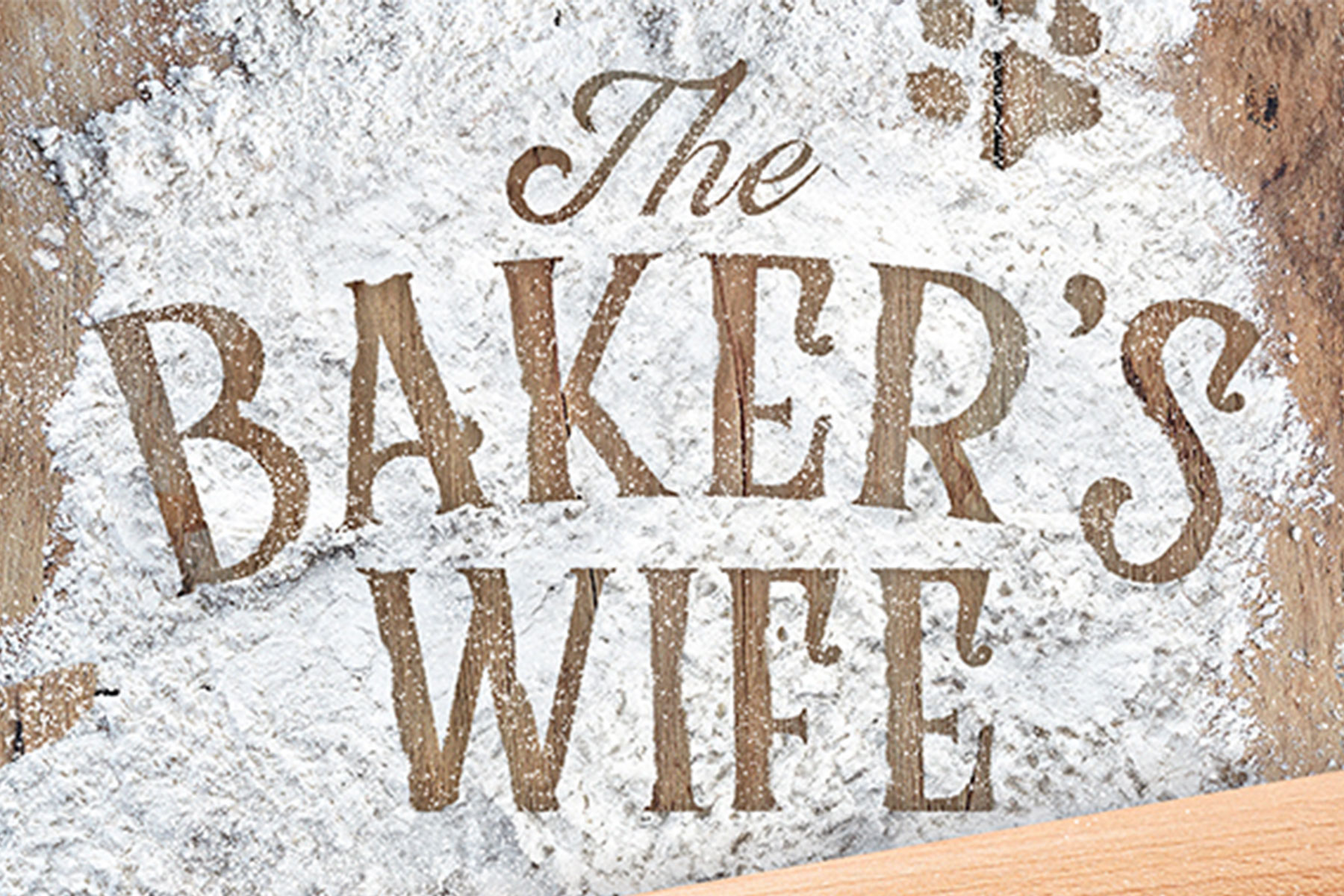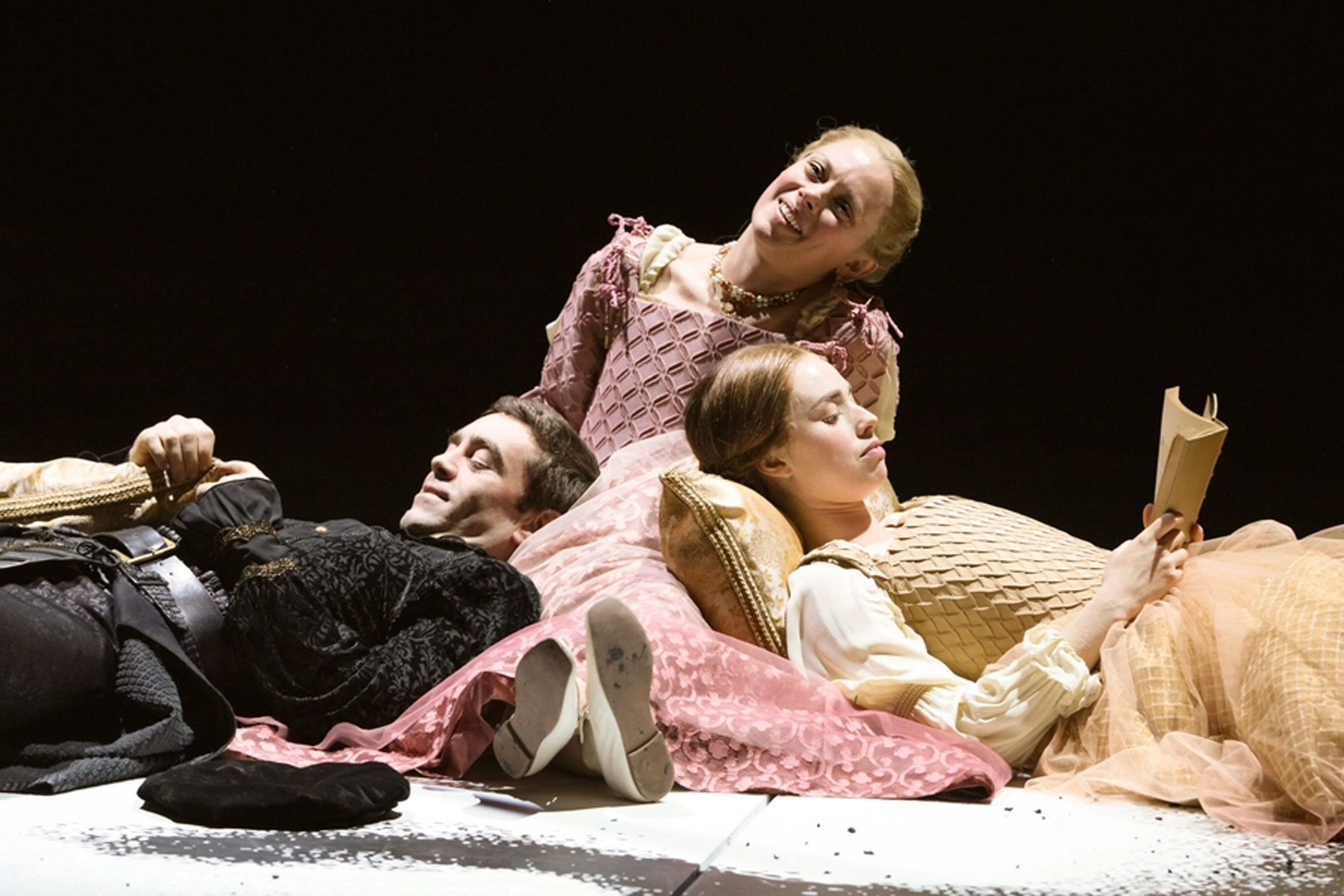Review: Flight (Summerhall, Edinburgh Fringe)
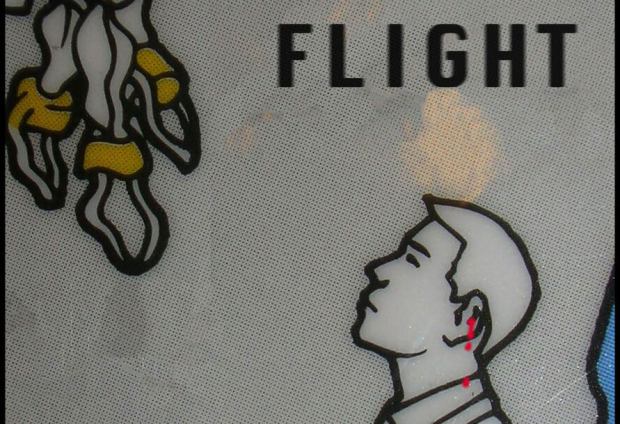
As an anxious flyer, I make peace with death every time I board a plane. If this 500-ton metal tube is going to go down, I tell myself, there's not a jot I can do about it. Should we all die a fiery, depressurised, ear-popping death, well, so it goes: win some, lose some.
At the start of Darkfield's flight crash simulator, a passenger call goes up for one Mr Schrödinger. The in-flight safety card shows a plane splitting in two. Video screens flicker between blue and red airlines. Somewhere in the aircraft, a cat starts miaowing. While we're sealed inside this pressurised cabin, we are in two places at once: neither where we took off, nor where we're going. We are, David Rosenberg and Glen Neath suggest, simultaneously dead and alive.
Housed in a shipping container, Flight straps you into a slice of a plane cabin: squishy blues seats laid in threes, overhead lockers, oval windows. Wearing headphones and plunged into pitch darkness, we're rolled through the familiar routine of air travel. The pilot's reassuring voice purrs over the intercom. Safety demonstrations flash up onscreen. An air hostess promises us light refreshments in-flight.
This is, however, a bumpy old ride; a flight that glitches and jolts in mid-air. In your ears, ordinary cabin noises tinkle in surround sound. Peanut packages pop open. Toilets flush with a whoosh. A baby starts crying, then another, and another. The quiet whir of cruising altitude calm flicks, in an instant, to the roar of twin engines ripping through air in an abrupt, unscheduled descent. Calm returns. Then horror. Silence. Screams.
The spirit of Flight MH370 hovers over this eerily unsettling piece of headphone theatre – a plane that disappeared without trace, its passengers neither dead nor alive. One theory runs that, having lost pressure, the plane plummeted until it picked up enough speed to start climbing again, losing velocity until it began another descent. For hours, it oscillated, up and down, until the fuel ran out: a ghost plane with no pilots and no passengers.
Flight might be too reliant on its rollercoaster thrills – the excitement of being bumped around in the dark – but it does key into the psychology of phobia well. In flickering between plain sailing and plummet, it catches the persistent nagging notion of imminent death us aerophobes know all too well. No matter how concerted our calm, every gear change or air bump triggers a terrible thought and, at 36,000 feet, my consciousness is slight – at once flying high and tailspinning down, between departure lounge and destination, dead and alive. Is there a hypnotherapist on the plane?



